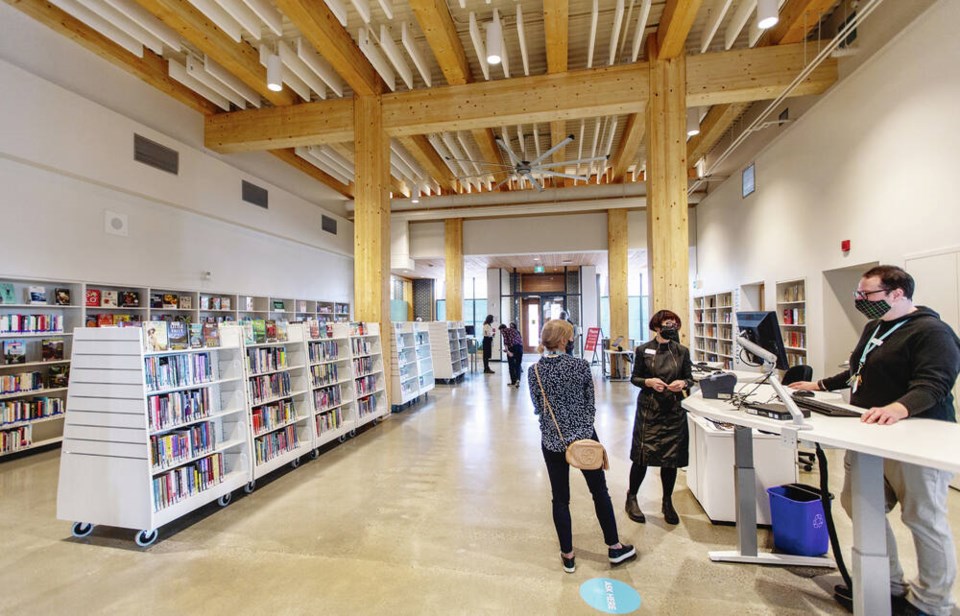Canada’s 600 public libraries, with their 2.1 million books, are finally getting additional support — at least at the level of words — from the federal government, but it has taken a while.
Only 41 per cent of Canadians are public library cardholders, but an estimated 20 per cent who have a library card haven’t used it in the past three years.
Way back in 2003, a House of Commons report, “Raising Adult Literacy Skills,” recommended a pan-Canadian response which would, among other things, “expand support for community learning and family literacy partnerships as well as promote and support more literacy initiatives that involve the participation of public libraries, a key contributor to literacy promotion and development in our communities.”
Why the renewed concern about literacy in Canada, especially adult literacy?
Because in 2013, Statistics Canada reported that more than one in six adult Canadians, 16 per cent, fell short of passing the most basic set of literacy tests.
That’s troubling because poor reading, writing and numeracy skills in adults make up a literacy gap in Canada with consequences for both democracy and the economy. Experts say the gap is due in part to an abundance of jobs in the past that do not require the daily use of reading comprehension and information synthesis skills.
Canada’s results, which have not substantially changed since the first full Programme for the International Assessment of Adult Competencies in 2013, show that many adults in this country are unable to complete ordinary tasks, such as filling out a job application, reading a news article or sending an email.
The PIAAC is an international assessment of information-processing skill, both verbal and arithmetic, required to participate in the social and economic life of the advanced economies in the 21st century.
It would be tempting to blame the situation on an inadequate school system. But that doesn’t wash because Canadian 15-year-olds are among the highest performers in the world in reading and math, faring well compared with the Organization for Economic Co-operation and Development averages, as they have done for years.
Specifically, Canada had the third-highest proportion of students at the highest reading proficiency level (15 per cent) among all OECD countries. Also, the proportion of Canadian students who did not meet the minimum proficiency in reading (14 per cent), was well below the OECD average of 23 per cent (and lower than the rates for the United Kingdom, the United States and Australia).
Nonetheless, about half the Canadian adult population fell short of passing a high school level of assessment, by testing the ability to digest lengthier and more complex texts while processing the information accurately.
“Generally speaking, Canada’s adult population is below average compared to other OECD countries in terms of adult literacy, numeracy skills,” said Michael Burt, an economist with the Conference Board of Canada.
Burt said people with low literacy or numeracy skills might not be able to read a book or newspaper, understand road signs or price labels, make sense of a bus or train timetable, fill out a form, read instructions on medicines or use the internet.
Is it an immigrancy problem? Again, not really if opinion is to be based on fact. It may be a factor, though, because 20.6 per cent of Canadians (6.8 million people) reported a mother tongue other than English or French, but only 6.2 per cent of Canadians spoke a language other than English or French as their “at home” language.
A C.D. Howe Institute report in September 2015, “Underperforming Adults? The Paradox of Skills Development in Canada,” by Andrew Parkin points to the importance of building on Canada’s success to date in both education and immigration by targeting skills development and language training to the groups who need it most, including older workers, Canadians with less formal education, and immigrants, especially those whose first language is neither English nor French.
The best place to do that is a literacy program at the local public library.
But the No. 1 reason why adult literacy should be at the top of municipal, regional, provincial and federal “to do” lists is the correlation between illiteracy and homelessness.
Health needs are common in people who are homeless and vulnerably housed, but their health literacy (ability to read and understand health information) is often not known. Higher levels of health literacy were associated with being housed and with higher levels of education.
“Health literacy” is defined as the degree to which individuals have the capacity to obtain, process and understand basic health information needed to make appropriate health decisions.
This suggests that a low level of general literacy is almost certainly a potential barrier for accessing and using health services and information for vulnerable populations.
Check what literacy programs and volunteer opportunities exist at your nearest libraries.
gfjohnson4@shaw.ca
Geoff Johnson is a former superintendent of schools.



